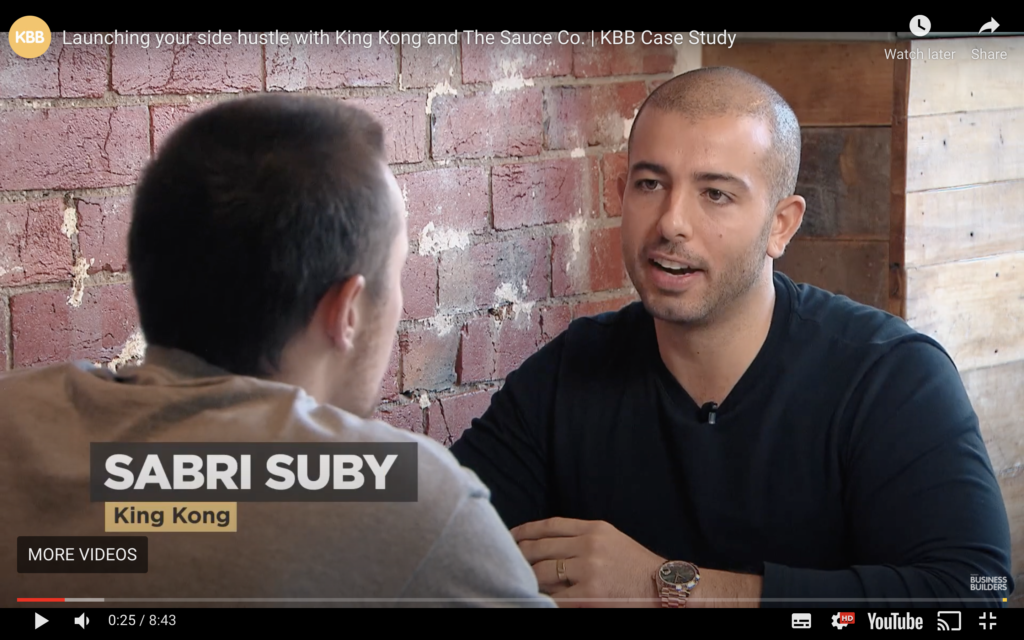During my time running my own PR firm, I’ve met more than my fair share of business leaders who simply don’t want to promote themselves. Their reasons are wide and varied: everything from being ‘camera shy’ to not feeling like they have anything interesting to say.
This is very often the case in retail, where business owners are very often craftsmen, creators and practitioners at heart. These retail leaders started their business through a love of the product they sell, rather than a desire to become a ‘thought leader’. This reservation is also true of the business operators who lead the retail business – they just want to get the job done.
However, if retail business owners don’t start putting themselves out there, they’re missing out on a huge opportunity to drive preference for their business over their competitors. In today’s age of social media and thought leadership, people genuinely want to see the person behind the brand. Think Camilla and Marc, Outland Denim, Trinny London and Goop: all brands that put their leaders front and centre, which in turn helps grow their bottom line.
Personally, putting myself out there has been a huge part of the growth of my PR business. I wouldn’t be in the place I am today without it. In fact, more than half of our current clients have come from our own promotional efforts.
If you’re concerned about seeming like you’re bragging or showing off, don’t panic, because there are many strategies for selling yourself without selling out. Much of the time, it’s about understanding the line between the two and ensuring you tread it carefully.
‘Selling yourself’ is really about sharing ideas, advice, tools, and an informed opinion that will attract attention and benefit the audience. In the process, your business will be seen by more people, and your expertise will be promoted in an inoffensive, subtle way.
It’s not all about personal promotion or self-serving selling. By sharing your own knowledge, advice, and experiences, you’ll be able to help others in the process. In sharing this advice, you are showing your expertise and your personal values, rather than telling them. It’s a win win.
Ready to put yourself out there? Here are some tried and tested strategies to put your best foot forward.
Storytelling, not selling
Retail businesses sometimes struggle to remove the mask and show the human face of their organisation. Who are you? What are your interests? Why should shoppers trust you? The story behind the business – the ‘why’ – is far more compelling than technical information, business offers or sales messages.
Stop thinking of putting yourself out there as selling, instead, think of it as telling your business’ story. Many of my clients are completely unaware of the incredible stories they have at their fingertips (until we uncover them), and the chances are you are too.
Have you ever triumphed during a challenging time? Did you build your business from nothing? Do you have any remarkable members of staff? Can you do something particularly well? Is your start-up story compelling, different, or relatable?
Even mistakes and struggles can be turned into an engaging underdog tale that ultimately helps your business come out on top. If a business leader can prove they’re not afraid to tackle hard questions, the confidence it exudes is unparalleled. Confidence, openness and honesty are all keys that unlock the path towards trust, so it’s important to get comfortable with sharing.
All it takes is keeping your eyes and ears open for those genuine, truthful stories that are sitting within your organisation, waiting to be shared.
Embrace PR

PR is a great way to sell your business by letting journalists, publications, and influencers tell it for you. Once reserved for big companies and celebrities, public relations—PR for short—is now an essential function for any business wanting to grow.
PR can go one step further than advertising by showing your audience the best parts of your business, not just telling them. It says to your target market: a journalist, publication or influencer that knows my interests, style or shopping preferences, or this industry association, chose to support or seek out the advice of this business. Therefore, they must be at the top of their field and I am more likely to trust them and feel they are right for me. It drives trust and encourages an affinity and loyalty with brands.
In order to do your own PR effectively, you need to ensure that you can communicate in a clear and engaging way. A media outlet’s readers, listeners or viewers should want to know more, and your story should be unique, compelling, newsworthy, and informative or entertaining (depending on the media outlet).
If you can’t commit to providing this, I’d suggest finding someone who can help you. In PR, taking the wrong action is often worse than taking no action at all – especially when it comes to keeping journalists on your side.
Ultimately, PR helps a business and its leaders be heard above the noise, on platforms that audiences trust. By sharing the stage with other respected voices, businesses are able to turn a simple piece of communication into a long-lasting stamp of authority. All it takes is keeping your eyes and ears open for those genuine, truthful stories that are sitting within your organisation, waiting to be shared.
Use multiple channels
Make sure you’ve got at least some reference to your biggest successes in any place your customer might visit. The front page of your website, for example, is a chance to talk about your most recent award wins, media profiles, or game-changing work.
For example, if a fashion or lifestyle magazine ranks your product in its top 5, or features it in a seasonal trends piece, that calls for sharing. Add an ‘as seen in’ section to your website, promote it on your social media channels, display it in your stores or reception area, and milk it for all its worth. Inspirational advice shared in a media interview with your founder can be shared as quotes on Instagram with a great photo of your founder in action, or included in your email marketing.
Try adding your wins to your email signature, presentations, brochures, or even business proposals. If you can get it to the point where there’s absolutely no way anyone could miss it, you’re on the right track.
If you’re posting to LinkedIn, make sure you’ve shared on both your own personal profile and your company’s page. Ask other members of your team to share it too, since LinkedIn tends to prefer posts from personal profiles over company pages.
Twitter is another great way to get the message out there, especially if you tag some relevant stakeholders. If there’s a trending hashtag associated with the content, even better. Don’t be afraid to post the same link multiple times over the course of a few days, since Twitter is designed for more fleeting and transient posts.
Email signatures are an often-overlooked place of valuable real estate. Your team sends out emails to valuable stakeholders day in, day out: why wouldn’t you make sure the world can view your recent successes there, too?
Be genuinely useful

Shift from a focus of using your audience to solve your problems, i.e. ‘I need more sales to grow my profits’, or ‘I need my shopper to behave differently so it is easier for me’. Instead, focus on solving your audience’s problems, not yours, and considering how your expertise and your products can help them with their needs and wants.
Make sure that every interaction adds value. Any time you take up someone’s time and attention with your marketing and communications, they should feel it was beneficial to them.
Opinion and advice articles are both great ways to get yourself out there in a genuinely useful way. Opinion pieces are usually articles written by business leaders under their byline on a topic that’s close to their heart. They don’t necessarily have to be based around anything currently in the headlines, as long as the topic is interesting enough.
Start by researching the trade publications in your industry and figure out if they accept opinion pieces from external writers. The very publication you’re reading right now is a great place to start. Take a look at the kinds of topics they like to publish, and consider if you have anything interesting to add to the conversation. Chances are, you have a whole heap of opinions just waiting to be written.
Advice articles are similar to opinion pieces, but with an added benefit: they position you as an authority in your field. If you’ve been trusted to share your knowledge with a publication’s readers, chances are, potential customers will similarly believe your retail brand is one to trust.
In almost every case, the fear of ‘putting yourself out there’ is unfounded. Provided you are authentic, sharing your story and showing the behind the scenes of your success isn’t arrogance: it’s simply stating facts. And sharing your advice won’t fall prey to ‘tall poppy syndrome’ if your expertise is proven.
Consumers want to know the people behind the retailers they love, and that knowledge and trust ultimately builds brand loyalty, a strong reputation, and a business that will stand the test of time. What could be more important than that?
This blog post was written by Phoebe Netto, founder of Pure Public Relations, and was first featured on InsideRetail.com.au.

